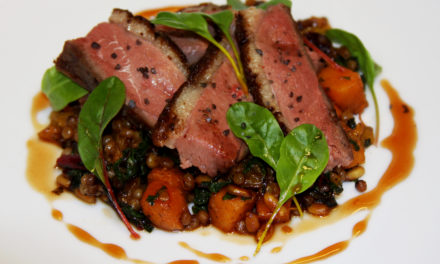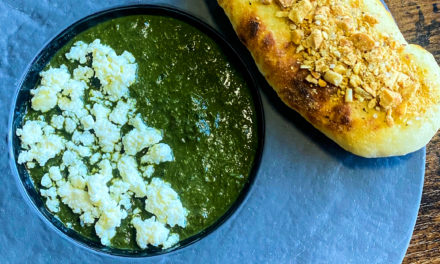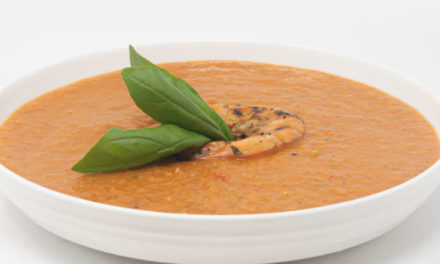Originally published in the Taste Our Love for the Land cookbook, published 2015.
When I was growing up on our farm back in Sicily, we raised almost all of our food ourselves—produce, cheese, olive oil, you name it. Salt and sugar were pretty much the only things we actually had to buy. When I was six years old, my parents cleared a place in the garden for me to plant tomatoes and other vegetables. They wanted to make sure I knew what I was eating and exactly where it came from.
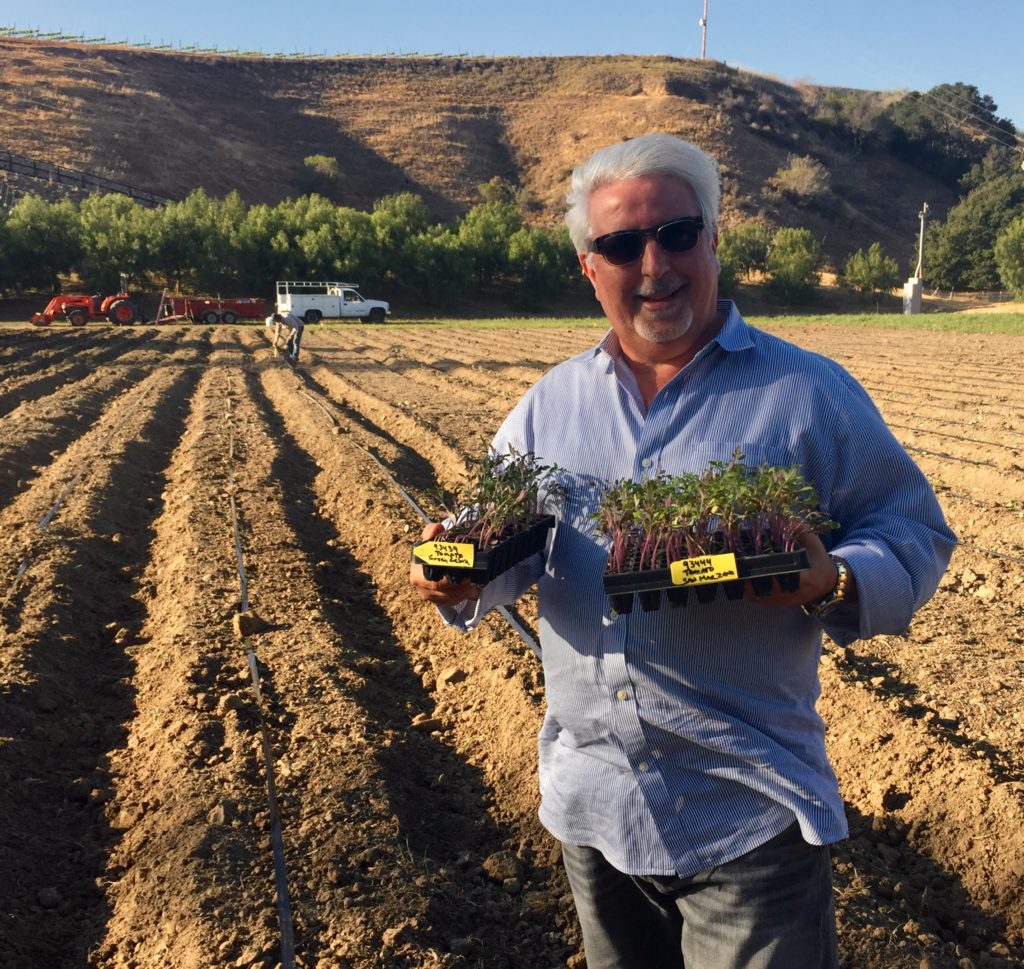
“There’s no reason the restaurant can’t be a classroom too!”
For chef Celestino Drago, making hands-on visits to local farms comes with the territory. Photos: courtesy of Celestino Drago/“Taste Our Love for the Land,” 2015
Today I work to pass this knowledge along to the children in our community here in Los Angeles. Unfortunately, if you ask kids today where tomatoes come from, they might say, “from a can!” So it has become even more important to educate them about how you grow things and what you should put on the table. Each year for the past ten years, for instance, we host sixth graders from the John Thomas Dye School at our restaurant, where one of our suppliers might bring in live sea urchins or a grower might bring in fresh produce. We want the kids to learn where their food comes from, how to ask questions about it, and why they should know these things in the first place. Or we might take the children to the fish market and show them what to look for. We’ll bring fresh catch back and cook it for them four different ways. There’s no reason that the restaurant can’t be a classroom too!
Of course, food education isn’t only for kids. For example, most of the salmon we serve at our restaurants comes from Skuna Bay Salmon on Vancouver Island, where it’s farmed in a natural ocean environment, then handpicked and shipped to us just three-to-a-box. This is the kind of product that we’re proud to serve, and that we want our customers to know about. They just have to know what to ask.
We’ve also started growing our own produce on several acres at Pence Ranch in Santa Barbara—tomatoes, kale, radishes, eggplant, zucchini, beets and lots more. I often drive up there myself to work the land and harvest the produce. For me, it’s worth driving an hour-and-a-half each way to be able to serve people the best possible products. These are the kinds of things we should know about what we’re eating. And it’s our job to help people—children and adults—learn how to ask the right questions.
Garganelli with Oahu Wild Boar Sausage Sauce
Serves 6 | By Celestino Drago
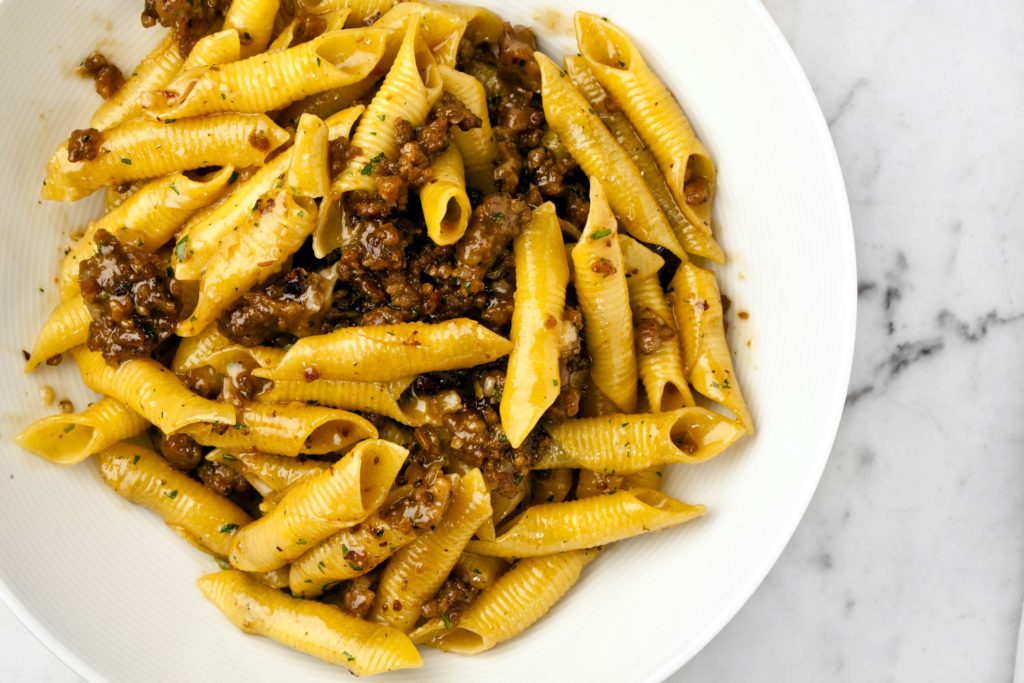
Garganelli with Oahu Wild Boar Sausage Sauce
Serves 6 | By Celestino Drago
1 pound dry garganelli pasta (preferably Rustichella D’Abruzzo brand)
12 ounces Oahu Wild Boar Sausage Sauce, warmed (recipe follows)
2 tablespoons butter
3 tablespoons grated Parmigiano-Reggiano cheese
Cook pasta al dente in salted boiling water, drain and mix with the warm sauce. Add butter and grated cheese. Mix well to incorporate ingredients.
Oahu Wild Boar Sausage Sauce
Oahu Wild Boar Sausage (recipe follows)
1 cup olive oil
2 cups carrots, chopped fine
2 cups celery, chopped fine
4¼ cups beef or chicken broth
Add olive oil to a large sauce pan and heat. When oil is hot, add the sausage mixture, and cook until meat is golden in color. Add celery and carrots, cook for 5 more minutes, then add broth. Cook over low heat until liquid is reduced by half. Cool sauce, refrigerate and use it as needed.
Oahu Wild Boar Sausage
3 pounds coarse-ground, lean Oahu wild boar (leg or shoulder meat)
2 pounds coarse-ground O‘ahu wild boar belly
2 tablespoons salt
1 tablespoon fennel seeds
1 teaspoon red chili flakes
2 cups red wine
In a mixing bowl, add all the above ingredients, mix well, cover with plastic wrap and let rest in the refrigerator for about 48 hours. Mix every 12 hours. Form into sausages or use in sauce.
